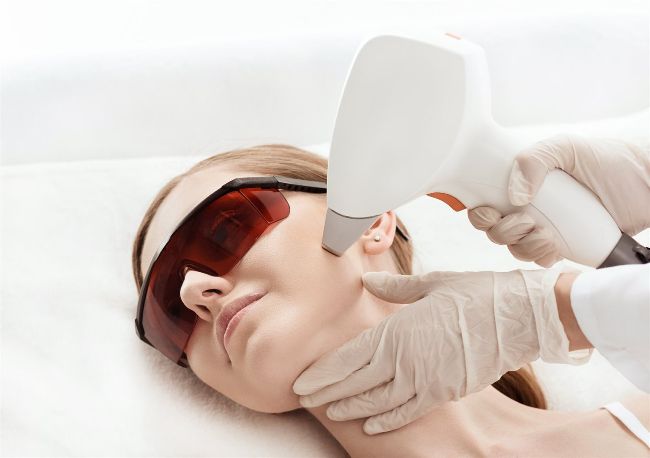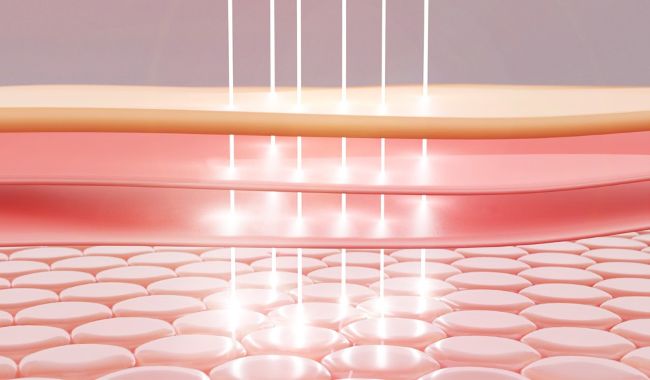Facing the FACTS
We asked the experts from Aesthetic Laser Academy to answer all your questions about light-based treatments for ageing skin

Image from Shutterstock
Is there a difference between skin tightening treatments and skin rejuvenation treatments, or are they one and the same thing?
They are generally the same thing, however, skin rejuvenation aims to restore overall skin health, cell renewal rate and texture. It also improves imperfections like pigmentation and acne. With skin tightening, the main objective is to improve the appearance of fine lines and wrinkles by improving elasticity and fibroblasts.
What is the basic premise of how lasers work on the skin so as to rejuvenate it?
In most cases, we’ll use a combination of heat and light applications that is administered through the epidermis, into the dermis where collagen and elastin is situated. This stimulates collagen and elastin and the effect is that the collagen is plumped up and elastin fibres shortened, leading to an overall improvement in the appearance of skin. This not only improves existing collagen and elastin, but stimulates new collagen and elastin cells to be produced, leading to bigger, better, stronger collagen and elastin and therefore healthier skin.
''RESULTS,
treatment time,
TREATMENT INTERVALS
and
NUMBER OF TREATMENTS
required vary per type of laser or
THERMO APPLICATION.
Results are also
INFLUENCED BY
the
CLIENTS’ AGE, HEALTH, LIFESTYLE
and
GENETIC
composition.''
Please explain the difference between ablative and non-ablative lasers and can each be used for skin rejuvenation and/or skin tightening?
Ablative lasers remove the top layer of skin, the stratum corneum, to improve various skin concerns. These types of lasers are more invasive and need more recovery time, pain relief and most importantly, stricter aftercare actions. CO2, TMA (Thermo Mechanical Ablation also known as Tixel) and Plasma Pen fall in the ablative category.
Non-ablative lasers warm up the underlying layers without damaging the top layer of skin. This means that they don’t need as much recovery time or downtime. These lasers can be used for both skin rejuvenation and skin tightening. Strict aftercare actions are required by the client for optimal results and to prevent damage to the skin. IPL (Intense Pulsed Light) and radiofrequency are classified as non-ablative.
What is fractional skin resurfacing?
Fractional lasers are used to treat various skin concerns, like uneven skin tone, hyperpigmentation, fine lines and wrinkles, acne scars, previous sun damage and skin texture. By removing the outer layers of damaged skin, they aim to heal and stimulate collagen and cell growth, which leads to a healthier appearance of the skin.
''CONSULTING
with the
CLIENT BEFORE TREATMENT
ensures that the
THERAPIST UNDERSTANDS
the
CLIENT’S NEEDS AND GOALS,
and has an
OPPORTUNITY TO EXPLAIN THE DOWNTIME,
recovery period, after
CARE METHODS
and
EXPECTED RESULTS
of the
SUGGESTED TREATMENT
with the client.''
What are the best laser technologies for treating ageing skin?
Although there are many laser technologies all designed to treat ageing skin, there are a few that we’ve found are more effective.
Radiofrequency uses extreme, controlled heat (40°C) to stimulate collagen and elastin, leading to less fine lines and wrinkles.
IPL uses a broad spectrum of light wavelengths, commonly known as photofacial or photorejuvenation (heat and light), to also stimulate collagen and elastin.
NDYAG uses heat, speed and light along with an application of activated charcoal / carbon face mask to improve skin appearance.
Thermo Mechanical Ablation (TMA / Tixel) is a fractional treatment that administers around 400°C through a sterile titanium tip to remove the top layer of skin and resurface skin cells. TMA is not a laser treatment in the true sense of the word.
Is there a particular age limit at which laser-based treatments are just not effective anymore, or is it based on the individual’s level of skin laxity and wrinkles?
We always have to stay realistic with the results of these lasers; you cannot make a 70-year-old granny look 50 again.
Realistically, clients can expect to look 10 years younger after a course of treatments.
Results, treatment time, treatment intervals and number of treatments required vary per type of laser or thermo application. Results are also influenced by the clients’ age, health, lifestyle and genetic composition.
In cases where clients have impaired immune systems e.g. diabetes and lifestyle habits e.g. smoking, it will take longer to see results and they may not be as effective.

Image from Shutterstock
Wrinkles can be classified in two main categories: Static wrinkles – permanent wrinkles that are visible without facial expressions. And Dynamic wrinkles, which are visible when someone smiles, frowns, etc.
It’s much easier to reduce the appearance of dynamic wrinkles, as they are not embedded yet.
Laser facials are considered to be the most effective treatment to reduce the appearance of wrinkles, but are found to be more effective when used as part of a daily skincare routine, which include drinking 2 litres of water.
In terms of trouble-shooting, what are the main pitfalls for the laser operator to avoid when performing anti-ageing skin treatments?
Consulting with the client before treatment ensures that the therapist understands the client’s needs and goals, and has an opportunity to explain the downtime, recovery period, after care methods and expected results of the suggested treatment with the client.
If using a combination of treatments e.g. laser, chemical peels, dermal fillers, etc, ensure to proceed with great caution so as not to over-stimulate the skin.
Normal effects of treatments are mostly redness of the skin, but if it looks hypersensitive, you shouldn’t continue with treatment.
The operator should also do a patch test to analyse the client’s response to a specific treatment.
We should check for skin sensitivity to ensure that the client can feel stimuli, like heat or pressure, to prevent damage.
What are the patient contraindications for these kinds of treatments?
Pregnancy and epilepsy are always a contraindication to laser treatments.
Skin thinning medication, like chronic cortisone, isotretinoin (acne medication) and retinoids, are a contraindication.
Hypersensitivity is also a contraindication, as we are using heat and we may stimulate or worsen the condition.
The Aesthetic Laser Academy is committed to providing the most comprehensive aesthetic laser skills training in SA, both in person and online, since inception in 2017. https://www.laseracademy.co.za